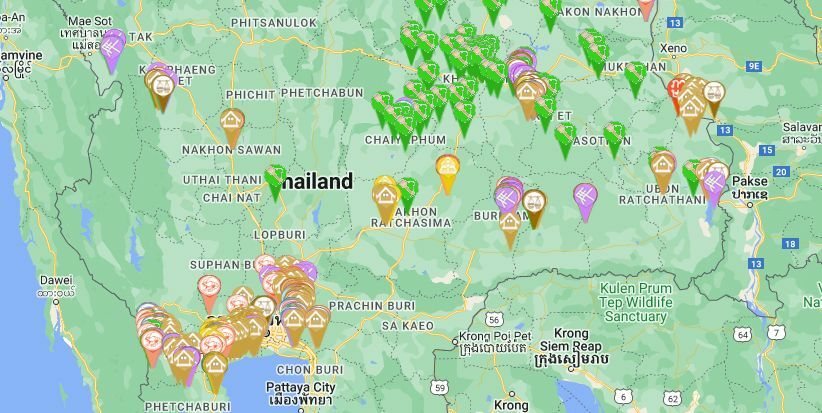Researchers launch first cultural map of Thailand

Culture enthusiasts will be excited to learn that researchers launched the first cultural map of Thailand, featuring more than 2,000 cultural sites from across the country.
The map provides cultural details that are categorized into 11 archetypes, which are: artefacts, architecture, historical sites, cultural spaces, languages, folk literature, knowledge and practices concerning nature and cosmology, performance arts, folk sports games and martial arts, social practices, ritual and festive events, and traditional craftsmanship.
The map also features GPS locations for precise navigation, Bangkok Post reported.
The database titled the “Cultural Map of Thailand,” is part of a research project which will eventually be developed into a “Cultural Atlas of Thailand” and “Cultural Metaverse Thailand,” according to Kitti Sajjawattana, director of the Area Development Fund Management and Fund Management Unit (Dasta).
The virtual map was developed by the Programme Management Unit for Area-based Development (PMU-A) under the Office of National Higher Education Science Research and Innovation Policy Council. It was created in partnership with a university network for area-based development comprising 41 universities from 33 provinces.
The PMU-A has been upgrading the cultural map into a cultural metaverse. The metaverse will be presented in four pavilions based on Thailand’s main four regions. The PMU-A aims to attract the younger generation and will use virtual reality to introduce both tangible and intangible cultural details.
According to Sutat Gammanee, a professor at Kanchanaburi Rajabhat University, the database was created using contributions from cultural experts and researchers who contributed over 2,621 data collections.
Each region of Thailand is known for its own unique culture and traditions. From landscape and food to language and culture, everything can change dramatically depending on which part of the country you visit.
Many people in the country’s north are of Tai Yuan or Tai Lue ethnicities, with a significant number of hill tribe people. The Northern region is famous for its intricate Lanna architecture, distinctive cuisine, traditional music, and dance performances.
Meanwhile, the northeastern region of Thailand is home to the largest population of people of Lao descent. The northeast is known for its spicy food, traditional music, and dance performances. Many cultural and religious festivals are celebrated in Isaan, such as the famous Rocket Festival. The region is also known for its silk weaving and other handicrafts.
The people of South Thailand have a unique culture, with a significant Muslim population and a strong influence from Malaysia. The region is known for its seafood dishes, traditional dance and music performances, and festivals such as the vegetarian festival in Phuket.
Central Thailand is known for its impressive historical sites, including the ancient capital of Ayutthaya, as well as its vibrant nightlife and bustling street food scene. The central region is home to the country’s capital city, Bangkok.
Latest Thailand News
Follow The Thaiger on Google News:


























